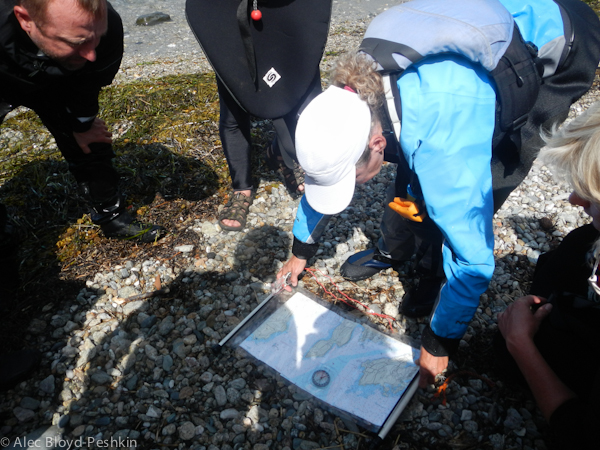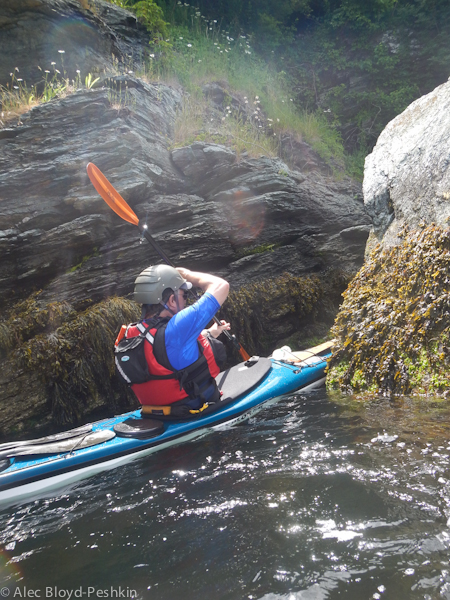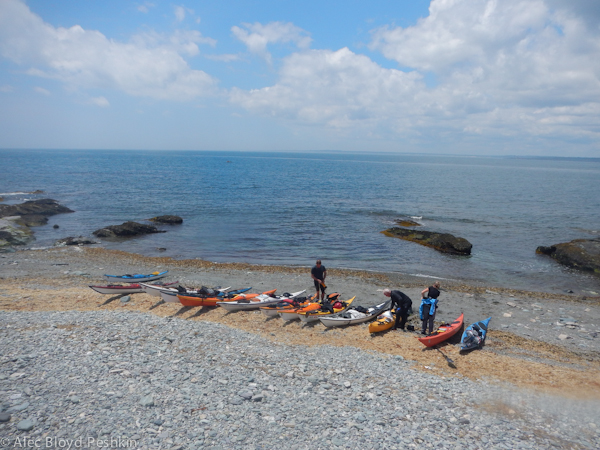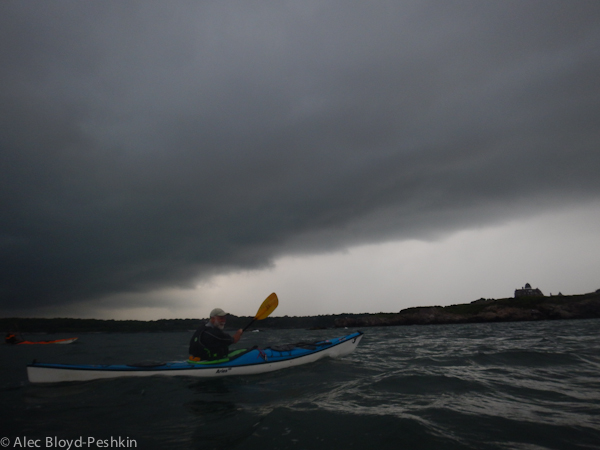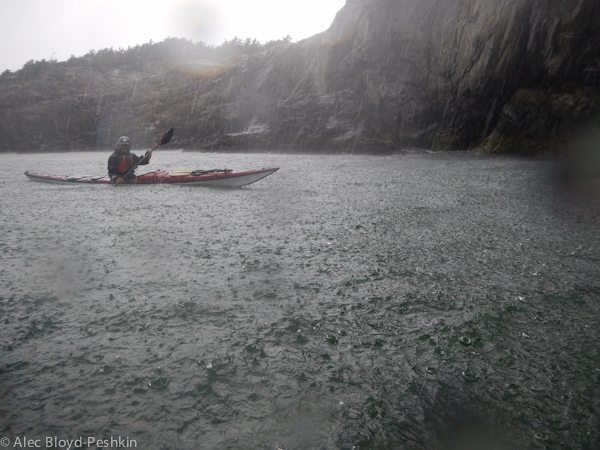The third day of our Ocean Skills Workshop involved crossing a busy shipping channel to get from Fort Wetherill State Park to Brenton Point State Park . But first, we had to figure our exactly where we were on our chart. So we began by seeking out aids to navigation (buoys, lighthouses) and land features and orienting ourselves in relation to them. Once we established our position, we were ready to set a course and launch.
We kept close and kept up a fast pace across the channel. Traffic wasn’t as busy as it would have been on a weekend, but it was busy enough to warrant caution.

An America’s Cup sailboat passed in front of us as we crossed the channel.
When we reached the Newport shoreline, we slowed the pace and poked into slots, enjoying the movement of the water over and around rocks. We worked our way around to the State Park, where we stopped for lunch.
After lunch, it was hard to resist a little detour to see the Newport Mansions and surf some of the swell over nearby rocks. But we knew that the forecast included storms in the afternoon; we had chosen this route because of it. And as the sky darkened and the temperature dropped, it was clear that the safest course was the most direct one back to Fort Wetherill.
We kept our eyes on the clouds as we paddled back, watching for any electrical activity. Had we seen any lightning, we would have split the group and bolted for the nearest safe landing site. But that need didn’t arise.
Before crossing to Fort Wetherill, we checked the radar and determined that we had time to paddle that exposed portion. As we arrived on the other side, rain pelted down, but the most ominous skies were no longer above us.
If you paddle often, you’ll get caught on the water when bad weather moves in. The key is to keep calm and make the best decisions possible.
As we finished loading our boats, the rain stopped and the sky brightened. It had been another fun and full day on the water. Everyone had learned something about navigation, crossings and boat control in bumpy water, but there hadn’t been a single overt coaching session. The environment had set up the learning opportunities, and the coaches had simply offered timely tips and handy hints for understanding those lessons.


